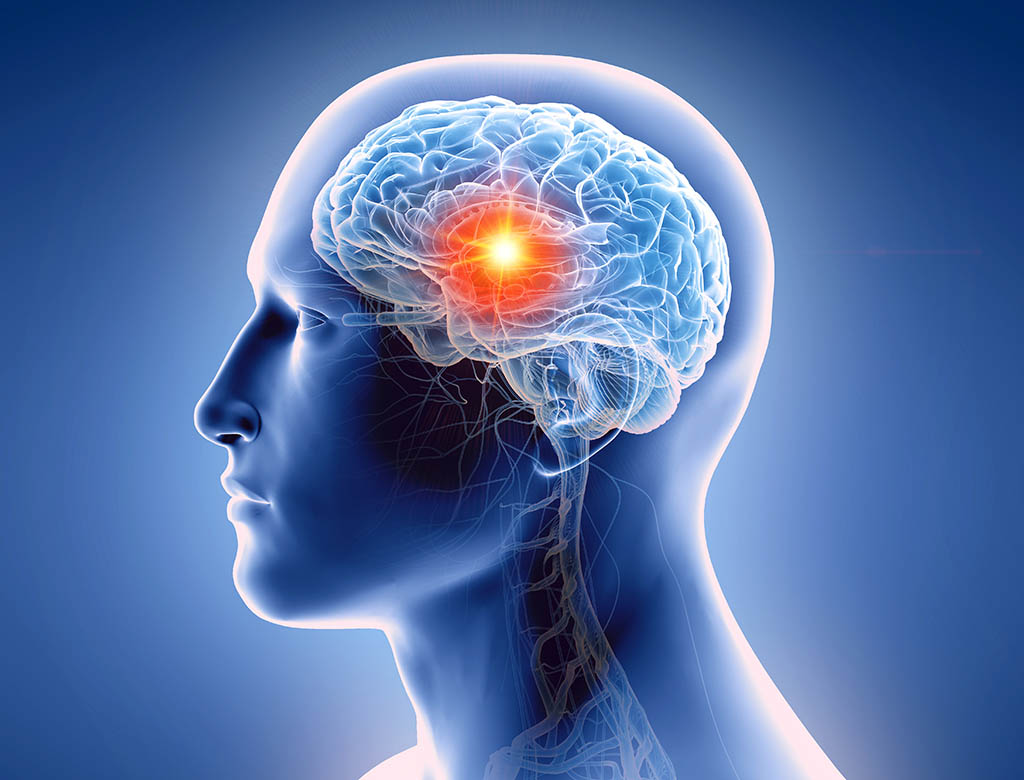


Based on the brain tissues they affect, there are over 120 different forms of brain tumors. Even benign (or noncancerous) brain tumors can be harmful due to their size or location as not all brain tumors are cancer. Both toddlers and adults can develop benign or malignant (cancerous) brain tumors. Brain tumors can affect your brain function whether or not they are cancerous if they enlarge to the point where they press against nearby tissues. There are numerous ways to treat brain tumors.
An abnormal mass of cells growing inside or outside of your brain is called a brain tumor. Central nervous system (CNS) cancers are the collective term used for spinal tumors and brain tumors.
Brain tumors may be benign or malignant (cancerous/noncancerous). The growth of these tumors also varies with time.
Only one-third of all brain tumors are malignant. However, whether or not they are cancerous, brain tumors can affect your health and the way your brain functions if they enlarge to the point where they strain nearby nerves, blood vessels, and tissue.
Primary tumors are tumors that form in the brain. Also called metastatic brain tumors, secondary tumors are cancers that develop in some other part of the body before spreading to the brain.
Over 150 different types of brain tumors have been identified by researchers.
Glial or non-glial primary tumors are classified as benign or malignant. Glial primary tumors comprise of glial cells in the brain while non-glial primary tumors are formed on or in the structures of the brain (including arteries, nerves and glands)
Primary brain tumors originate in your brain. They can develop from your:
Primary tumors can be malignant or benign. The most common types of brain tumors in adults include glioma and meningioma.
Gliomas are tumors that develop from glial cells. These cells normally:
Different types of glial cells can contribute to the development of Gliomas.
Glial cell tumors can have the following forms:
Other primary brain tumors include
According to a study that grouped participants into men and women, meningiomas are diagnosed more frequently in women than in men.
Schwannomas occur equally in both men and women. Although these tumors are mostly benign, their size and location can lead to difficulties. Although uncommon, aggressive cancerous schwannomas and meningiomas can exist.
Secondary Brain Tumors
Most of the brain malignancies comprise of secondary tumors. They start in a single area of the body and metastasis, while spreading to the brain.
Malignant secondary brain tumors are unavoidable.
Whether or not they are malignant, brain tumors can have catastrophic consequences. This is due to the rigidity of your skull, which prevents the tumor from growing. A tumor if developing near brain parts that control vital functions, may cause symptoms, such as:
Brain tumors can cause problems by:
Risk factors for brain tumors include:
Of all malignancies, only 5 to 10 percent are hereditary or genetically inherited. Rarely does a brain tumor have a hereditary component. If numerous members of your family have been told they have brain tumors, consult your doctor.
Age increases the risk for the majority of brain tumor types.
Exposure to certain chemicals like ones you would encounter at work pose risks.
Ionizing radiation exposure increases the risk of developing brain cancers in people. High-radiation cancer therapy is associated with Ionizing radiation, a risk contributor.
The size & positioning of the tumor affects its symptoms. Some tumors directly harm brain tissue, while others put pressure nearby.
When a growing tumor is exerting pressure on your brain tissue, you'll experience visible symptoms.
A common sign of a brain tumor is headaches. You might have headaches that:
You may also experience:
Other Common Symptoms of Brain Tumor include:
Pituitary tumor symptoms include the following:
The Physical examination thorough neurological evaluation and review of one’s medical history make up the first steps to diagnosing a brain tumor.
Your cranial nerves will be tested by your doctor to determine whether they are healthy. These nerves have their roots in your brain.
With the aid of an ophthalmoscope, which is a device that flashes light through your pupils and onto your retinas, the doctor will examine the inside of your eyes to evaluate the response to light.
This helps the doctor to check for any optic nerve enlargement. The optic nerve might change when the pressure inside the skull builds.
The doctor may also evaluate:
Following the physical examination, your doctor can recommend additional tests. These might consist of:
A CT scan can help in thorough evaluation of the head compared to an X-ray scanner. Either contrast or no contrast can be used in this.
A specific dye is used to provide contrast during a CT scan of the head, which enables medical professionals to view some structures more clearly, such as blood arteries.
Your doctor may employ a specialised dye during a head MRI to aid in the detection of cancers. A CT scan uses radiation, whereas an MRI doesn't, and typically produces considerably more detailed images of the actual structures of the brain.
A dye injected into the arteries is used in this procedure. It enables your doctor to observe how the tumors' blood supply appears which is useful at the time of surgery
Specific X-rays can reveal if there have been any fractures or breaks in the skull's bones due to brain tumors. These X-rays can detect calcium deposits, which are occasionally found inside tumors. If your cancer has spread to your bones, calcium deposits could be present in your circulation.
During a biopsy, a small bit of the tumor is removed which is examined by a neuro-pathologist. Whether the tumor cells are benign or malignant will be determined by the biopsy. It will also reveal whether your brain or another area of your body was the cancer's original location.
The Brain tumor treatment depends on:
Surgery forms the most common treatment for cancerous brain tumors with the aim of eliminating as much of the cancer as possible.
Brain cancer can benefit from even partial removal of the tumors, which can be safely removed depending on their position,
Brain surgery has risks, such as haemorrhage and infection. Surgery also helps remove clinically threatening benign tumors.
Chemotherapy and radiation therapy are two examples of additional treatments that can be coupled with surgery.
You can recover from neurosurgery with the aid of physical therapy, occupational therapy, and speech therapy.
 Allergy Test
Allergy Test
 Anemia Test
Anemia Test
 Auto immune
Auto immune
 Blood disorder
Blood disorder
 Bone and Joint
Bone and Joint
 Cancer Test
Cancer Test
 Cardiology Test
Cardiology Test
 Covid Recovery
Covid Recovery
 Dengue Test
Dengue Test
 Depression
Depression
 Diabetes Test
Diabetes Test
 Fatigue
Fatigue
 Fever Test
Fever Test
 Full body
Full body
 Gastro Test
Gastro Test
 Gastrointestinal
Gastrointestinal
 Gynaecology Test
Gynaecology Test
 Heart Test
Heart Test
 HIV Test
HIV Test
 Hormone Test
Hormone Test
 Hypertension
Hypertension
 Immunity Test
Immunity Test
 Infectious Disease
Infectious Disease
 Infertility Test
Infertility Test
 Influenza Test
Influenza Test
 Iron Test
Iron Test
 Kidney Test
Kidney Test
 Liver Test
Liver Test
 Lung Test
Lung Test
 Nephrology
Nephrology
 Obesity
Obesity
 Orthopedics Test
Orthopedics Test
 Physician
Physician
 Pollution Health Checkup
Pollution Health Checkup
 Pregnancy Test
Pregnancy Test
 Prostate Test
Prostate Test
 Senior Citizen Test
Senior Citizen Test
 STD Test
STD Test
 Thyroid Test
Thyroid Test
 Tuberculosis Test
Tuberculosis Test
 Vitamin Test
Vitamin Test
 Women Health Test
Women Health Test